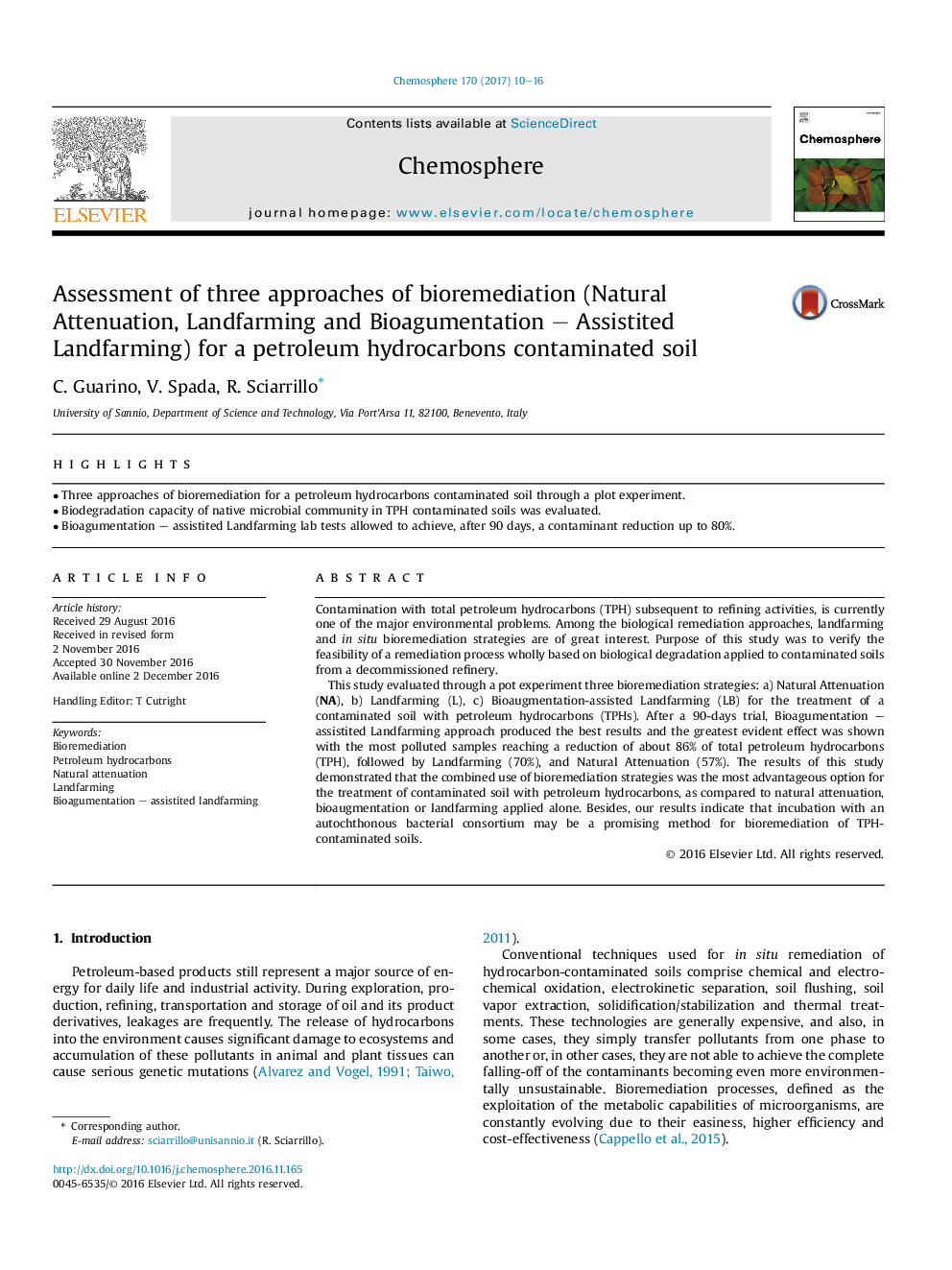| Article ID | Journal | Published Year | Pages | File Type |
|---|---|---|---|---|
| 5746786 | Chemosphere | 2017 | 7 Pages |
â¢Three approaches of bioremediation for a petroleum hydrocarbons contaminated soil through a plot experiment.â¢Biodegradation capacity of native microbial community in TPH contaminated soils was evaluated.â¢Bioagumentation - assistited Landfarming lab tests allowed to achieve, after 90 days, a contaminant reduction up to 80%.
Contamination with total petroleum hydrocarbons (TPH) subsequent to refining activities, is currently one of the major environmental problems. Among the biological remediation approaches, landfarming and in situ bioremediation strategies are of great interest. Purpose of this study was to verify the feasibility of a remediation process wholly based on biological degradation applied to contaminated soils from a decommissioned refinery.This study evaluated through a pot experiment three bioremediation strategies: a) Natural Attenuation (NA), b) Landfarming (L), c) Bioaugmentation-assisted Landfarming (LB) for the treatment of a contaminated soil with petroleum hydrocarbons (TPHs). After a 90-days trial, Bioagumentation - assistited Landfarming approach produced the best results and the greatest evident effect was shown with the most polluted samples reaching a reduction of about 86% of total petroleum hydrocarbons (TPH), followed by Landfarming (70%), and Natural Attenuation (57%). The results of this study demonstrated that the combined use of bioremediation strategies was the most advantageous option for the treatment of contaminated soil with petroleum hydrocarbons, as compared to natural attenuation, bioaugmentation or landfarming applied alone. Besides, our results indicate that incubation with an autochthonous bacterial consortium may be a promising method for bioremediation of TPH-contaminated soils.
